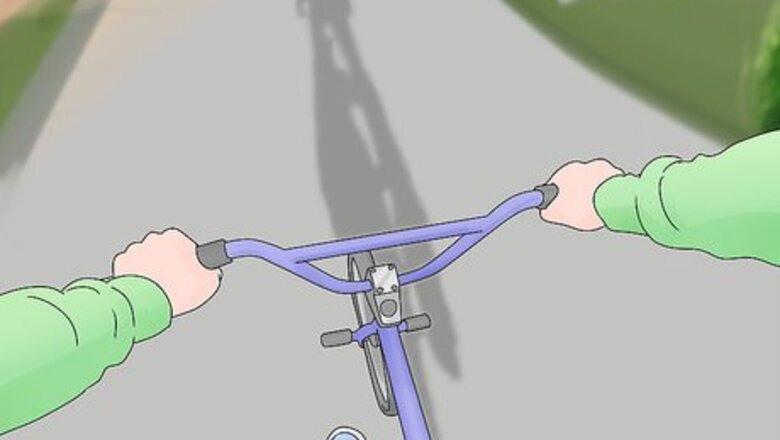
views
Practicing the Basics
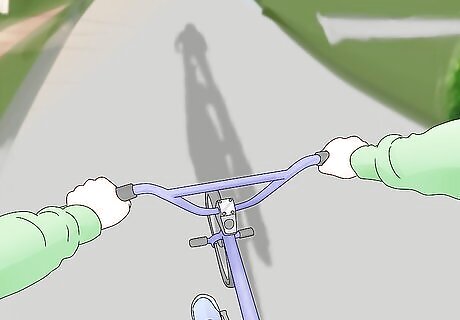
Start biking at a slow to medium speed in an open area. Find a flat, open area that you can practice biking in without any obstacles. After gaining speed, your bike should be able to travel 40 to 60 feet (12 to 18 m) without the need for pedaling. If your bike is difficult to control and you're feeling off balance, you're going too slow—increase your speed.
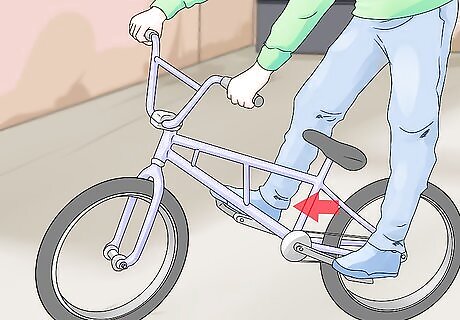
Place your dominant foot forward before lifting your front wheel. Get used to the positioning your feet properly prior to your wheelie. Before lifting your wheel, position your non-dominant foot down—at the bottom of the circle created during the pedaling motion—and your dominant foot up—at the top of the circle—ready to be pushed forward. Always keep your knees in-line with the pedals—if you turn them outward too much, you will throw off your balance.
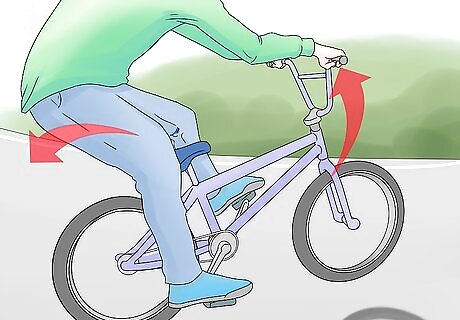
Pull back on the handlebars and lift the front wheel from the ground. As you move around, stand up slightly and practice popping the wheel from the ground by pulling the handlebars back until the wheel is about 2 to 3 inches (5.1 to 7.6 cm) from the ground. Keep doing this to get a sense of how heavy your bike is and how much force is required to bring it slightly off the ground. Right before pulling the front wheel up, get your feet into position and stop peddling.
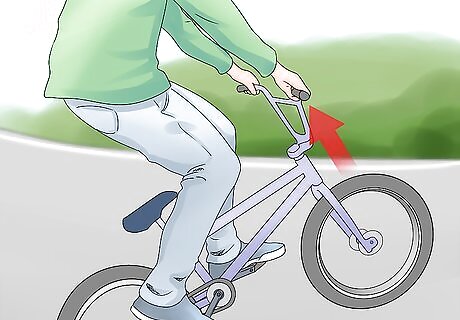
Practice manuals before progressing to wheelies. Pull on the handlebars, stand up slightly, and shift your weight back to lift the front wheel about 2 to 3 inches (5.1 to 7.6 cm) off the ground. Push forward with your feet gently to counter the backward force created by pulling, but don't pedal. This is called a manual and is the precursor to a wheelie. Keep your arms vertical throughout the manual. Bend your legs slightly so you can easily extend your buttocks outward and inward to maintain balance. For example, if you feel the bike falling forward, extend your buttocks outward behind you to pull the weight of the bike backward. Practice until you can manual for about 5 to 10 feet (1.5 to 3.0 m). Aim to keep your bike about 40 to 45 degrees off the ground.
Popping a Wheelie

Shift your bodyweight back as you ride in a straight line. To prepare for your wheelie, move your buttocks to the back of your seat into the direction of the back wheel. Once your pop your wheelie, you need to maintain this position for balance. Keep your arms straight, vertical, and parallel to each other.
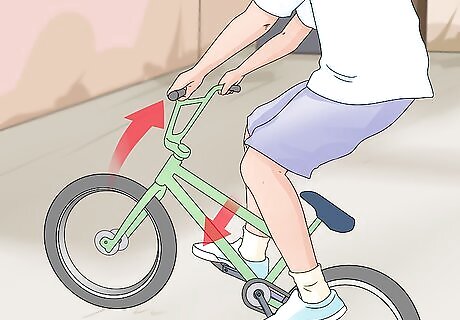
Thrust forward with your dominant foot while pulling back on the handles. Position yourself so that your dominant foot is forward—at the top of the circle created during the pedaling motion—and your non-dominant foot is down—at the bottom of the circle. Afterwards, thrust forward with your dominant foot. By simultaneously thrusting the pedal with your strong foot and pulling back, you can enter a wheelie position. Maintain a greater pulling force than your push, but maintain enough of a forward push that you don't fall backwards. Keep your knees level with the pedals before making your forward thrust. Keep your arms straight with a slight bend in your elbows. As you pedal forward, move the handlebars forward and backward as needed to maintain balance. For example, if the bike begins to fall forward, bend your arms backward and pull the handlebars toward you.
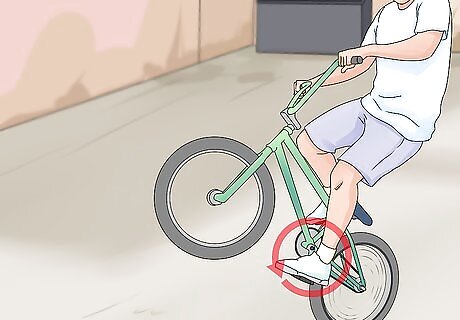
Pedal continuously and apply torque to keep your front end up. Continue pedaling and be sure to thrust and create enough torque (the force that causes your wheels to rotate) to maintain your position. At the same time, keep your back end balanced to maintain a straight position and avoid tilting to one side. Remember to keep your buttocks on the back of your seat to give yourself balance. If you're starting to flip backwards, stop pedaling and let yourself coast in a manual. Tap your rear brake (not the coaster brake on the hub of the rear wheel) to bring your front wheel down slightly. If you start falling forwards, pedal harder and faster.
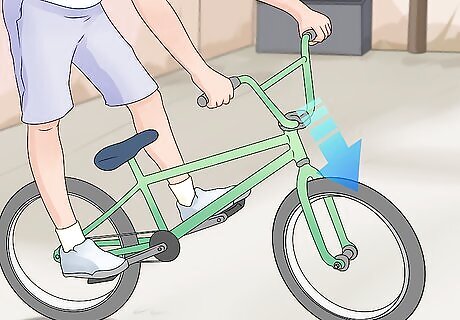
Disengage from the wheelie by slowing down your pedaling. By slowing down your pedaling, the front wheel of the bike will lower to the ground. Be sure to gradually slow down your pedaling to ensure a smooth landing. You can also hit the rear break to bring the front wheel to the ground, but this is a more abrupt method that should be reserved for emergencies. If you're going to fall backwards, remove your feet from the pedals and jump backwards onto the ground. Keep hold of the handlebars so your bike doesn’t get away from you.
















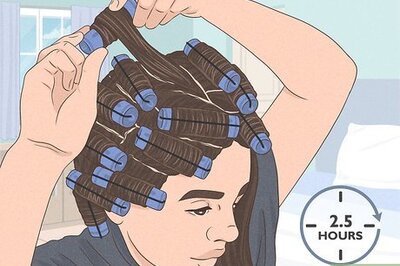
Comments
0 comment